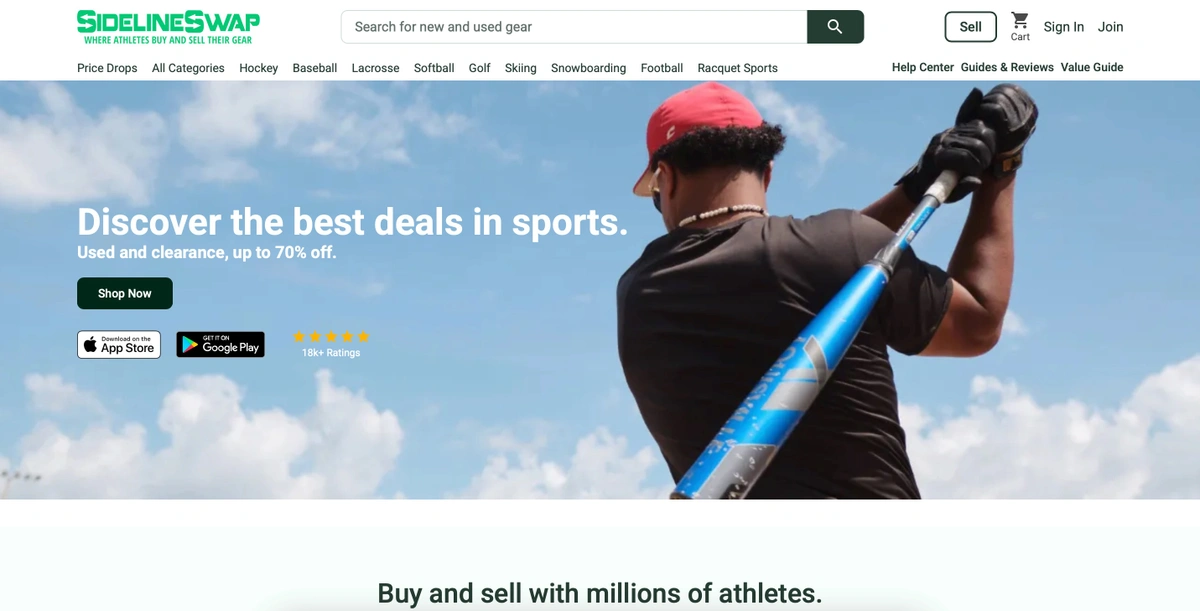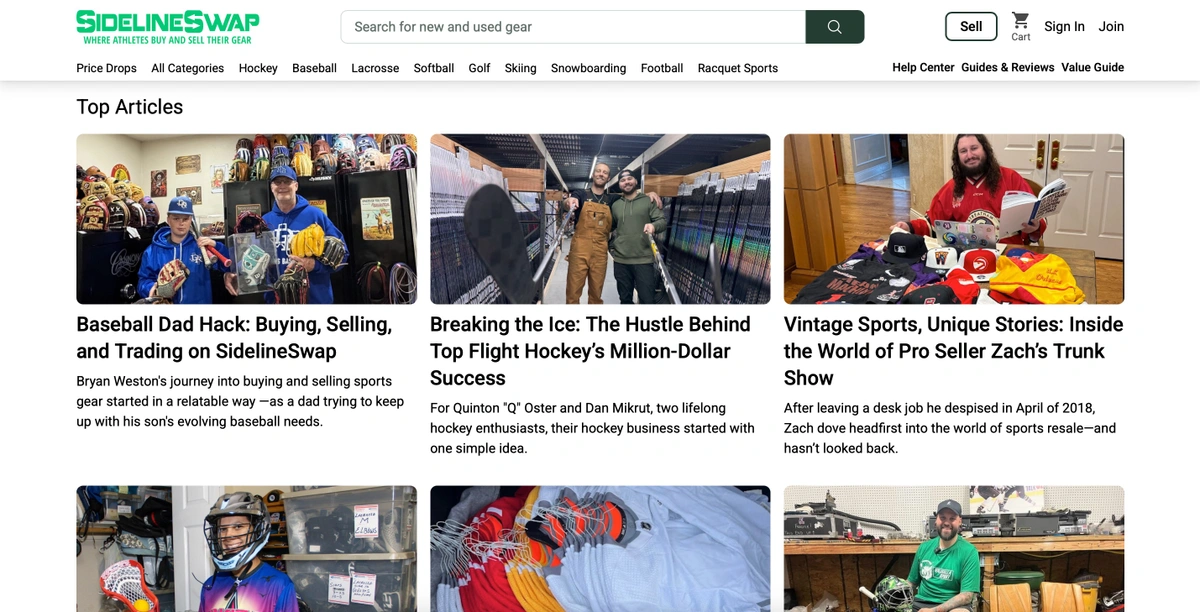Learn how MDHearing Uses ButterCMS to Reduce Organizational Overhead and Continuous A/B Testings for a 15% lift in revenue!
- Industry: Sporting goods
- Markets: United States
- Use-Case: eCommerce
- Features Highlights: Blog, Collections
- Tech Stack: Next.js
- Content Stats: Blog posts: 140, Pages: 1487, Media Library: 986
- Previous Cms: Homegrown
- Customer Since: 2023
Executive Summary
By replacing their fragmented, developer-dependent CMS with ButterCMS, SidelineSwap empowered their team to move faster, manage content independently, and support an ambitious content roadmap. With a low learning curve, flexible collections, and reusable content models, they streamlined operations, saved tens of thousands in developer hours, and built the agility needed to scale their business.
Recognizing that the cost of equipment can price children and adults out of trying sports, SidelineSwap was founded with a mission: Create a platform for buying and selling used sporting equipment, thereby making sports more accessible and affordable.
Founded in 2014, the sports equipment eCommerce platform lets individual sellers list and sell gear. Boasting a large community of athletes who buy and sell on the platform, SidelineSwap has been included on Andreessen Horowitz’s A16z Top 100 Marketplaces list.
The Challenge
SidelineSwap aims to keep quality, used gear in play and out of storage once athletes are finished with it. However, their CMS and content platform were slowing them down. Their blog lived on one platform, while their onsite content was developed and served through a homegrown CMS that wasn’t built for usability or scalability. Plus, some content wasn’t even accessible through a platform. Instead, developers needed to step in and manually implement changes and updates.
This three-legged content stool was a significant roadblock for growth. “Sometimes we had to rebuild our CMS to allow us to do things on an ongoing basis,” said Conon McDonough, Head of Marketing. “If we needed to stand up a page, we’d need an engineer to spend four hours doing that instead of just running it through the CMS.” The developer resource bottlenecks weren’t the only pain point, however. The homegrown CMS they were using, built on Rails, was inflexible and difficult to work with. “Our homegrown CMS was, honestly, one of the biggest pain points,” said McDonough. “It wasn’t a consumer-facing product; a designer didn’t think intentionally about it. It was messy to use.”
The Solution
The team at SidelineSwap wanted a unified solution that would make it easier for them to keep their blog updated, would allow them launch new pages, and support new initiatives - without developer resource bottlenecks. As they began their search, their frontend developer suggested investigating headless CMSs. With a very ambitious content roadmap in front of them, a headless CMS seemed like the right solution to support the flexibility and nimbleness they would need.
While looking for the right platform, the team found ButterCMS. It offered the agility SidelineSwap needed and offered all of the components that they wanted in a new solution, plus a native blog editor.
Once chosen, the first project they tackled with ButterCMS was porting their blog. “It was a breeze,” McDonough explained. “It took our front-end engineer an hour to move the blog over. The learning curve was less about migrating existing content and more about starting to understand how we could use the different pieces of the platform.”
After the success of the blog migration, the team was ready to tackle more. First, SidelineSwap built pages to support trade-in events. Dynamic and data-driven, the pages were designed to show regional events based on a visitor’s state or geographical area, including a list of upcoming event dates. These pages needed frequent updates to maintain the events calendar, something the previous CMS wouldn’t have allowed for without significant engineering intervention. With ButterCMS, the data resides within the CMS - completely independent from the backend systems, mitigating the need for developer support.
After the success of the trade-in events initiative, SidelineSwap was ready to make a big investment in their on-page content. The company was able to leverage collections and content blocks in ButterCMS. With collections, the team could make use of the massive amount of data that they had. With reusable content blocks, repetitive development work was minimized and the content team saved time while keeping branding and messaging consistent everywhere it was published. Combined, SidelineSwap was better able to support their enormous product catalog and innovate with “model pages”, which act as a starting point for sellers to list their specific equipment with their own details.

"It took our front-end engineer an hour to move the blog over. The learning curve was less about migrating existing content and more about starting to understand how we could use the different pieces of the platform."
“From an engineering cost perspective, it might be tough to quantify, but it’s probably in the tens of thousands of dollars of engineering work saved."
Conor McDonough
Head of Marketing
The Results
With ButterCMS, SidelineSwap now has a flexible, easy-to-use, and scalable content platform that has created opportunities to reduce costs, increase efficiency, and create better user experiences.
Instead of taking weeks to stand up new content types, the content team can do it themselves. A backend developer isn’t needed, since the data lives within the CMS. Not only does this result in faster content delivery, but there are financial benefits as well. “From an engineering cost perspective, it might be tough to quantify, but it’s probably in the tens of thousands of dollars of engineering work saved,” stated McDonough.
It’s added agility to SidelineSwap’s content as well. With the data now available in ButterCMS, their frontend developer can grab different elements and rapidly build out a multitude of helpful content, including “Best of” lists and comparison pages.
The simplicity of Butter's interface opened up new possibilities for the team. Its intuitive design made it easy to scale content operations—even bringing in freelancers who could contribute right away with little to no ramp-up. What was once a massive blocker became a streamlined content engine—unlocking the team’s ability to manage thousands of pages and collections with ease and turn their content into a business enabler. Plus, the intuitive UI simplifies working with thousands of pages and collections. “I’ve come from using Wordpress,” noted Lauren Sauser, Content Lead, “which can be so frustrating. ButterCMS makes it easy to find whatever page you’re working on.”






